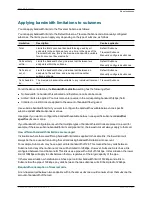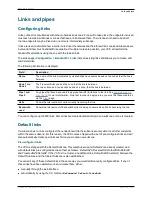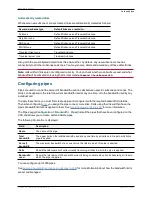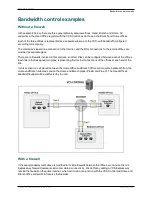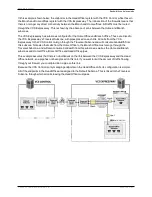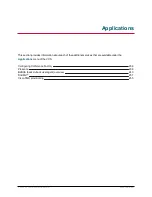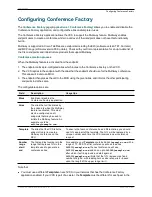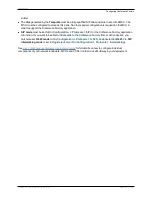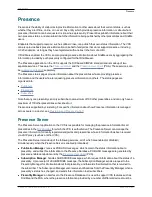
Configuring bandwidth controls
The
Bandwidth configuration
page (
Configuration > Bandwidth > Configuration
) is used to specify
how the VCS behaves in situations when it receives a call with no bandwidth specified, and when it receives
a call that requests more bandwidth than is currently available.
The configurable options are:
Field
Description
Usage tips
Default call
bandwidth
(kbps)
The bandwidth to use for calls for which no bandwidth value
has been specified by the system that initiated the call.
It also defines the minimum bandwidth to use on SIP to
H.323 interworked calls.
This value cannot be blank. The default value is 384kbps.
Usually, when a call is initiated
the endpoint will include in the
request the amount of
bandwidth it wants to use.
Downspeed
per call mode
Determines what happens if the
per-call
bandwidth
restrictions on a subzone or pipe mean that there is
insufficient bandwidth available to place a call at the
requested rate.
On
: the call will be downspeeded.
Off
: the call will not be placed.
Downspeed
total mode
Determines what happens if the
total
bandwidth restrictions
on a subzone or pipe mean that there is insufficient
bandwidth available to place a call at the requested rate.
On
: the call will be downspeeded.
Off
: the call will not be placed.
About downspeeding
If bandwidth control is in use, there may be situations when there is insufficient bandwidth available to place
a call at the requested rate. By default (and assuming that there is some bandwidth still available) the VCS
will still attempt to connect the call, but at a reduced bandwidth – this is known as
downspeeding
.
Downspeeding can be configured so that it is applied in either or both of the following scenarios:
n
when the requested bandwidth for the call exceeds the lowest per-call limit for the subzone or pipes
n
when placing the call at the requested bandwidth would mean that the total bandwidth limits for that
subzone or pipes would be exceeded
You can turn off downspeeding, in which case if there is insufficient bandwidth to place the call at the
originally requested rate, the call will not be placed at all. This could be used if, when your network is nearing
capacity, you would rather a call failed to connect at all than be connected at a lower than requested speed.
In this situation endpoint users will get one of the following messages, depending on the system that initiated
the search:
n
"Exceeds Call Capacity"
n
"Gatekeeper Resources Unavailable"
Cisco VCS Administrator Guide (X8.1.1)
Page 223 of 507
Bandwidth control
Configuring bandwidth controls




















